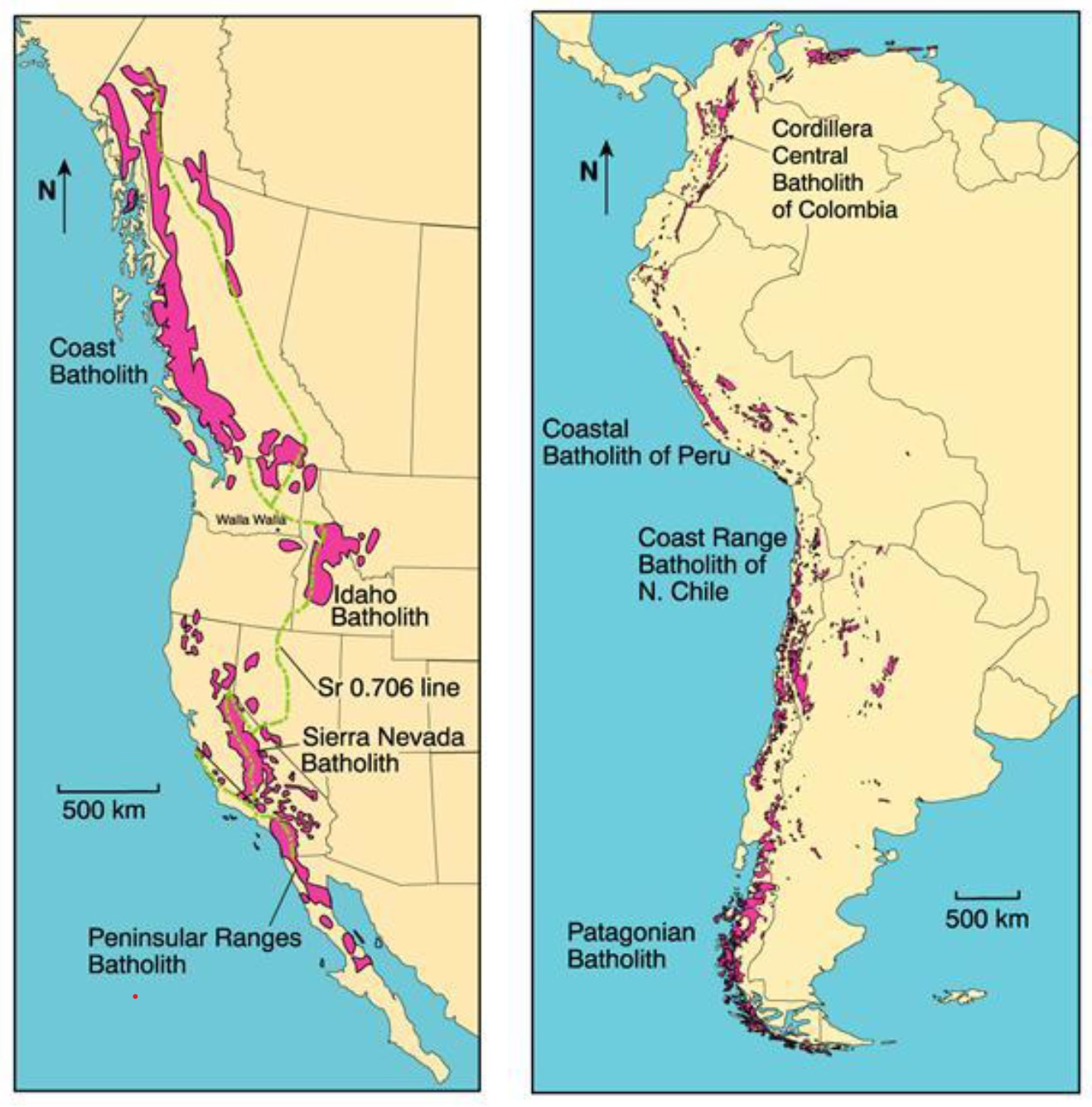CPT Q. 069: How does CPT produce thickened zones of low-density rock to form mountain belts?

Q. 69. How does CPT (or UPT) account for the presence of low-density rock at depth beneath mountain belts? Can mountain building really be explained using only natural processes?
Response: As I mention briefly in my answer to question 63, a major source of low-density rock at depth beneath mountain belts is the sediment carried down by subduction in a subduction zone adjacent to a continent. Also please refer to my answer to question 30. Below are a brief quote and a figure from that answer:
The belt of Mesozoic-Tertiary plutonic rocks extending from Alaska to Antarctica, forming much of the mountain belt known as the American Cordillera, was produced by this subduction-caused melting beneath the western margins of these continents. The maps below display the main sites of this plutonic emplacement of new crustal material. Isostatic adjustment in these belts has resulted in the mountains we see there today.

In other words, the Coast Batholith, the Idaho Batholith, the Sierra Nevada Batholith, and the Penisular Range Batholith are all examples in North America of this process melted subducted sediments forming plutons which penetrated the overlying continental crust and added to its effective thickness. Subsequent isostatic adjustment produced the prominent mountains that characterize these zones today. The same process occurred in a noteworthy manner along the west coast of South America.